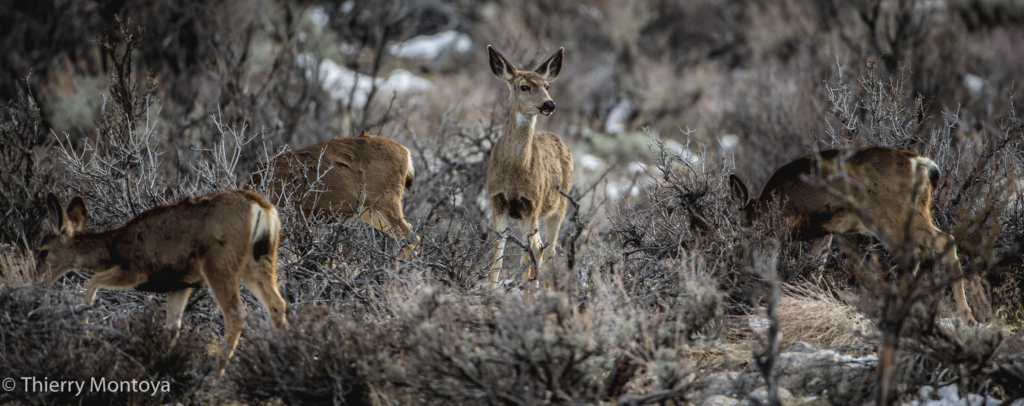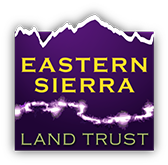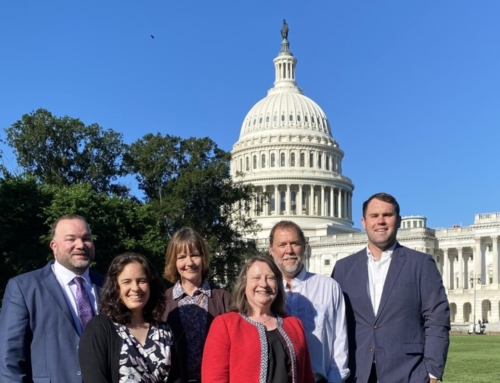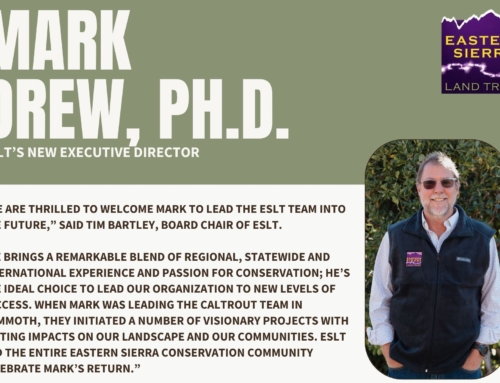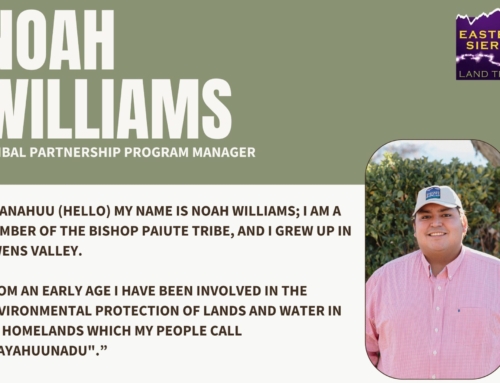A treacherous corridor. A missing puzzle piece. A shared solution.

Mule deer migrate through the Swall Meadows Wildlife Area twice every year.
Imagine that the year is 1999, and you just moved to a new home in Swall Meadows. Every day out your window, you begin to see the same thing. Mule deer! A lot of mule deer. This experience led community members to the discovery that homes lay in the middle of the Round Valley mule deer herd’s narrow biannual migration corridor. They felt invested in the future of their local wildlife. So they took action.
They talked to neighbors: Was there a way to protect land without stifling growth? They learned about land trusts’ unique ability to work with both private and public landowners, and their commitment to caring for protected land forever. They decided to found Eastern Sierra Land Trust. These first conservation leaders included Karl and Laura Hinrichs, Ralph and Lyn Haber, Stephen Ingram and Karen Ferrell-Ingram, and Rick Kattelmann. Their community initiative launched our vital conservation work.
Today, ESLT works with landowners to preserve diverse types of land throughout the Eastern Sierra, from mountain meadows and fishing spots to ranches and farms. And we always stay true to our beginnings: protecting habitat for wildlife. Right now, the Round Valley mule deer herd is on its way through a migration corridor bottleneck. It is only one mile wide, with Wheeler Crest rising dramatically on one side, Owens River Gorge dropping off on the other, and the busy Highway 395 running in between. Thanks to ESLT’s visionary founders, early donors, and residents of Swall Meadows who donated the first conservation easements, much of this migration corridor has been kept open and healthy for the deer.
Our work in caring for this herd continues. In 2011, ESLT acquired the 59-acre Swall Wildlife Preserve in partnership with the California Department of Fish and Wildlife (CDFW). We planned to transfer ownership to the agency from the start, as they own the surrounding Swall Meadows Wildlife Area. That transfer will be fulfilled soon. This no-cost transfer will connect CDFW lands to one another like a missing puzzle piece, bringing the Swall Meadows Wildlife Area under unified ownership and consistent, coordinated care that greatly benefits our deer.
Over the years, we have worked closely with CDFW to preserve native plants and improve habitat conditions in the Swall Meadows Wildlife Area. We have returned again and again alongside CDFW and dedicated volunteers to remove weeds, trash, and barbed wire. Our watchful efforts helped restore habitat health after 2015’s Round Fire. Our supporters have also enabled us to cultivate and plant bitterbrush, and reduce destructive trespassing. And they have enabled us to install a wildlife camera that records the location and movement of the deer. All this work has been possible thanks to CDFW, CAL FIRE, and California Deer Association.
We are pleased to be passing Swall Wildlife Preserve on to one of these trusted partners. The folks at CDFW will continue to care for this land, just as they have been doing throughout the last decade spent working alongside ESLT. We continue to protect wildlife and habitat in Swall Meadows, the place where it all started. Thanks to your ongoing support, the Round Valley mule deer herd remains in good hands.
~~~
John Donnelly answers your questions:
Will wildfire risks be managed? 2015’s Round Fire destroyed native plants, making space for fire-prone invasives. CDFW will continue to remove invasive plants and reduce destructive trespassing in order to lower threat of wildfire and to protect the health of mule deer habitat.
Will there be public access? Access rules do not change with this transfer. The purpose of the acquisition is primarily to preserve wildlife habitat, and the public can access the land on foot or by horse from neighboring public lands.
Where can we find more information? We will create a draft land management plan to guide the future uses of the property, as is CDFW’s policy. The public can review and comment on the proposed plan. Those interested in reviewing may contact the CDFW Bishop Field Office.
John Donnelly is Executive Director of the Wildlife Conservation Board, an independent Board within California Department of Fish and Wildlife committed to enhancing natural resources for wildlife and public enjoyment.
